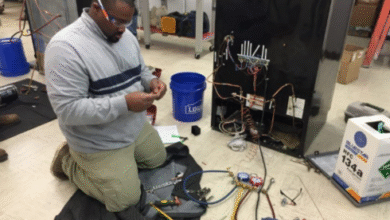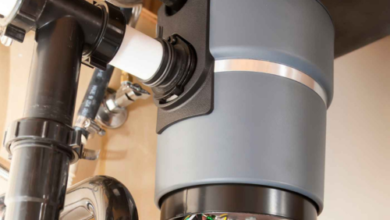How to Ensure Proper Concrete Sealing During New Home Construction

Concrete is a cornerstone of modern construction, valued for its strength, durability, and versatility. In new home construction, properly sealing concrete surfaces is crucial for enhancing longevity, preventing damage, and ensuring aesthetic appeal. This article outlines the key considerations and steps for ensuring effective concrete sealing during the construction process.
Understanding the Importance of Concrete Sealing
Concrete sealing is a protective process that involves applying a sealant to concrete surfaces to guard against moisture, stains, and wear. Here are several reasons why sealing is critical in new home construction:
- Moisture Resistance: Concrete is porous and can absorb water, leading to potential structural damage, mold growth, and surface deterioration. A quality sealant forms a barrier that prevents moisture penetration.
- Stain Prevention: Everyday spills and exposure to chemicals can cause stains on unsealed concrete. Sealing helps maintain the concrete’s appearance, making it easier to clean and maintain over time.
- Durability: Sealed concrete is less susceptible to wear and tear from foot traffic, vehicles, and weather conditions, extending the lifespan of driveways, patios, and floors.
- Aesthetic Appeal: A properly sealed concrete surface can enhance the overall look of the home. Sealants can provide a glossy finish or a matte look, depending on the desired aesthetic.
Selecting the Right Sealant
Choosing the appropriate sealant is critical for achieving effective concrete sealing. Here are factors to consider when selecting a sealant for new home construction:
- Type of Sealant: There are two primary types of sealants: penetrating and topical.
- Penetrating Sealants: These soak into the concrete, providing protection from within. They are ideal for outdoor applications and areas with high moisture exposure.
- Topical Sealants: These form a protective layer on the surface. They are often used for decorative finishes and interior spaces.
- UV Resistance: For exterior concrete surfaces, it is essential to select a sealant that offers UV protection to prevent fading and degradation from sun exposure.
- Traffic Tolerance: Consider the amount of foot or vehicle traffic the concrete will experience. Heavy-duty sealants are necessary for high-traffic areas to withstand wear and tear.
- Environmental Considerations: Ensure that the selected sealant is environmentally friendly and complies with local regulations, especially for residential spaces.
Preparing Concrete Surfaces for Sealing
Proper preparation of the concrete surface is critical to ensure the effectiveness of the sealing process. Here are steps to follow before applying a sealant:
- Cleaning: Thoroughly clean the concrete surface to remove dirt, grease, oil, and previous coatings. Use a pressure washer or a suitable cleaner designed for concrete surfaces.
- Repairing Damage: Inspect the concrete for cracks, holes, or other damage. Repair any issues with appropriate concrete fillers or patching compounds, ensuring a smooth surface before sealing.
- Drying: Allow the concrete to dry completely after cleaning and repairs. Applying sealant to damp concrete can trap moisture, leading to potential issues down the line.
Application of Concrete Sealant
Once the concrete surface is prepared, follow these guidelines for proper application of the sealant:
- Follow Manufacturer Instructions: Always read and adhere to the manufacturer’s instructions regarding application methods, drying times, and recommended conditions.
- Temperature and Weather Conditions: Ideally, seal concrete when temperatures are between 50°F and 90°F (10°C and 32°C) and avoid application during rain or extreme humidity.
- Tools for Application: Use the appropriate tools for the application method recommended by the manufacturer. Common tools include rollers, brushes, or spray equipment.
- Apply Evenly: Apply the sealant evenly across the surface, ensuring complete coverage. Work in small sections to prevent the sealant from drying before it is spread evenly.
- Multiple Coats: Depending on the type of sealant, applying multiple coats may be necessary for optimal protection. Allow sufficient drying time between coats as specified by the manufacturer.
Post-Sealing Care and Maintenance
After sealing the concrete, proper care and maintenance are essential for preserving the integrity of the seal. Here are tips for maintaining sealed concrete surfaces:
- Regular Cleaning: Clean sealed concrete surfaces regularly using a mild detergent and water to remove dirt and debris. Avoid using harsh chemicals that could break down the sealant.
- Reapplication of Sealant: Depending on the type of sealant used and the level of traffic, reapply the sealant every few years to maintain protection.
- Monitor for Damage: Regularly inspect the sealed surfaces for signs of wear or damage. Address any issues promptly to prevent further deterioration.
Conclusion
Incorporating proper concrete sealing practices during new home construction is essential for protecting your investment. By understanding the importance of sealing, selecting the right materials, and following best practices for preparation and application, homeowners can ensure their concrete surfaces remain durable, aesthetically pleasing, and functional for years to come. Prioritizing concrete sealing not only enhances the structural integrity of a new home but also contributes to its overall beauty and longevity.




